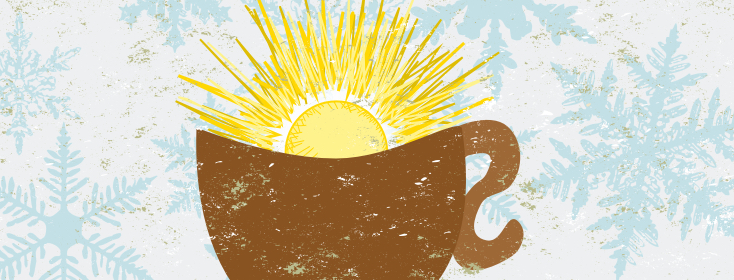Seasonal Affective Disorder
The winter months can bring plenty of things we enjoy: hot cocoa, fuzzy slippers, lots of cookies, and time with family and friends. But it can also bring some things many people do not enjoy: bitter cold, snow and ice, and far less daylight. It is incredibly common, especially after the buzz of the holiday season is over, for many individuals to feel down or “have the blues” during the winter months. Though individuals attribute these feelings to the weather, and they are correct, this feeling does actually have a name: Seasonal Affective Disorder, or SAD.
What is seasonal depression?
According to the National Institute of Mental Health, Seasonal Affective Disorder is “a type of depression that comes and goes with the seasons, typically starting in the late fall and early winter and going away during the spring and summer.”1 It is sometimes also called seasonal depression or winter depression. Because seasonal depression occurs when there is less sunlight, January and February tend to be the most difficult months for SAD sufferers in the United States.
Just like other types of depression, SAD is a real medical condition associated with chemical imbalances in the brain. In the case of SAD, it is triggered by less daylight, which can cause changes in circadian rhythm, as well as impact production of the chemicals serotonin and melatonin. People with SAD may also produce less Vitamin D, one vitamin which many individuals lack during the dark winter months. Symptoms of SAD, similar to other types of depression, may include fatigue, sadness, and weight gain associated with carbohydrate cravings, among other symptoms.2
How can we treat or manage SAD?
Fortunately there are many treatments for SAD, including medication and supplements, talk therapy, and light therapy. If you are concerned you may be suffering from SAD, talk to your health care provider. They will be able to help you rule out any potential medical causes for your feelings and help get you appropriate treatment. If you are ever experiencing suicidal thoughts, always contact a medical professional immediately, go to your nearest Emergency Room, or contact the National Suicide Prevention Lifeline (1-800-273-8255)
Other things that may be helpful to anyone suffering from SAD are common New Year's resolutions. Eating healthy, exercising, and getting enough sleep are great examples of self-improvement goals which can help fight against SAD. Mindfulness, or guided meditation, can also be helpful to individuals coping with depression or anxiety. One thing that always helps me during this time of year? The Winter Solstice, also known as the shortest day of the year, was December 21st. Every day after this gets longer, with more minutes of sunlight each day here on. I close my eyes and imagine an empty cup on December 21st; looking forward, the cup fills a little bit with more sunlight each day. Wishing all a Happy New Year, with full cups and many sunny days ahead!

Join the conversation